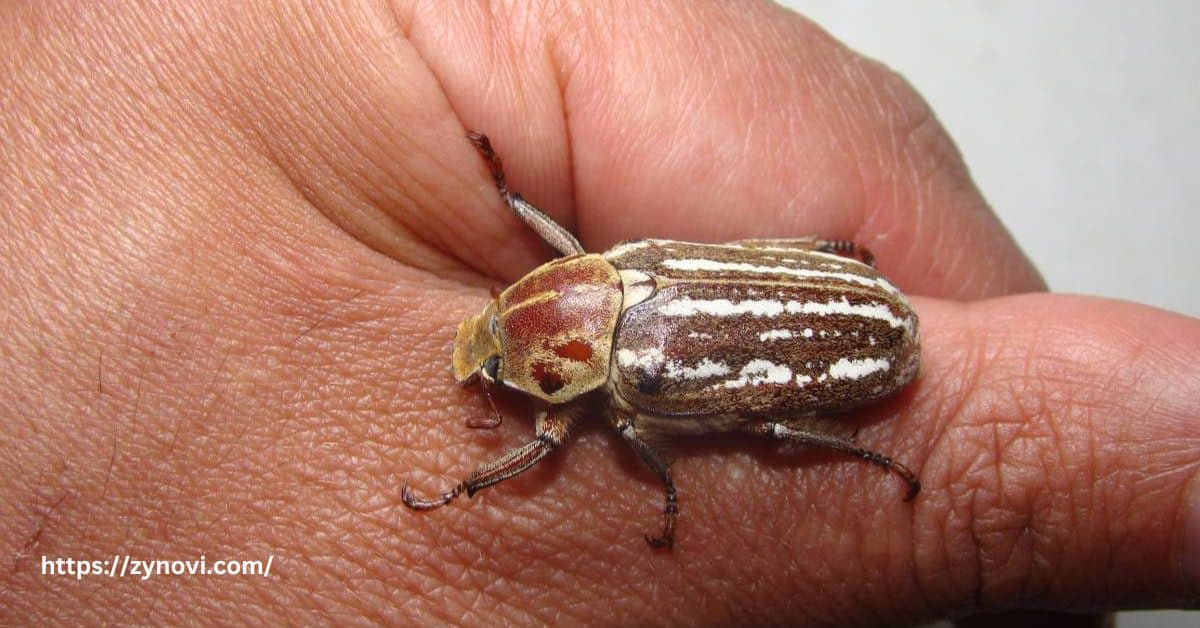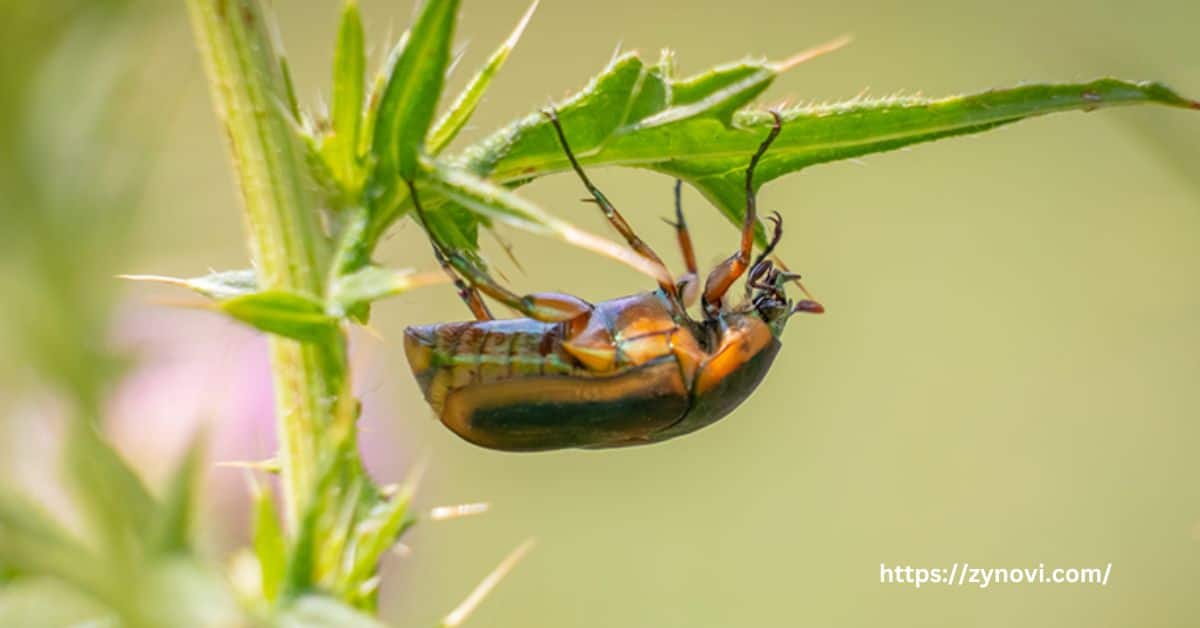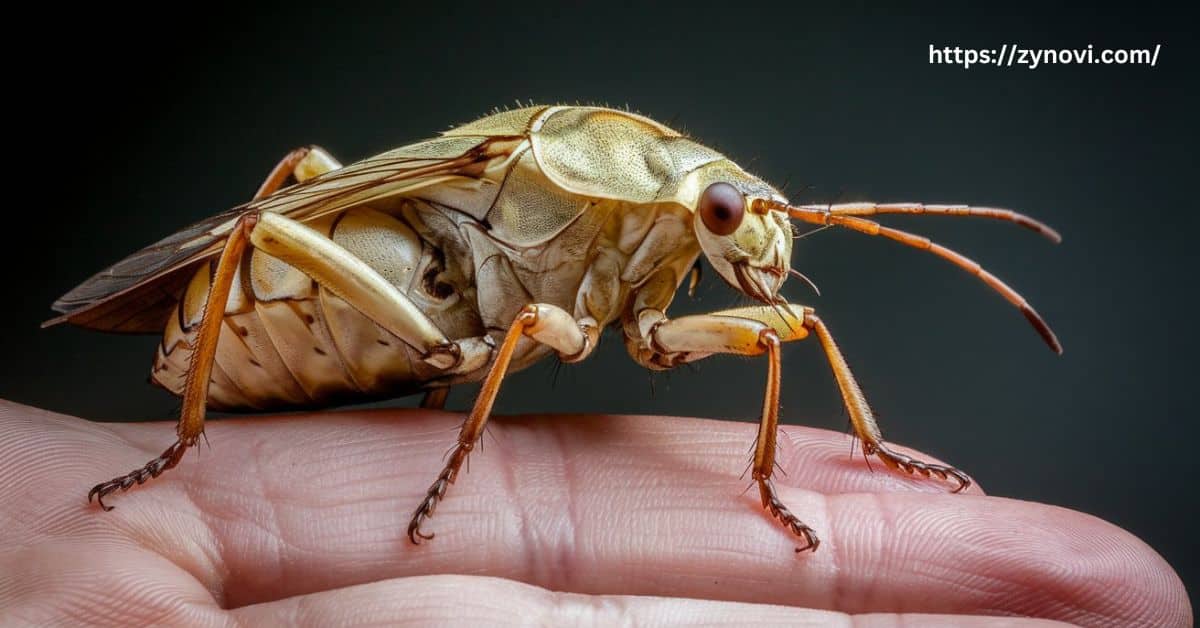Do June Bugs Attack Humans? June bugs do not attack humans; they are harmless and just cause startled reactions due to their erratic flight.
If you’ve ever been startled by a buzzing creature darting through the night, you’ve probably encountered one of these infamous insects. While they’re harmless to humans, their sudden erratic flight patterns can definitely catch you off guard.
But are these little beetles actually dangerous, or are they just misunderstood? In this article, we’ll find the truth behind June bugs, explore their behaviors, and separate fact from fiction. Keep reading to discover everything you need to know about these curious nocturnal travelers!
Who Are June Bugs?
Species Overview
June bugs, scientifically classified under the Genus Phyllophaga, are part of the larger scarab beetle family. These insects are medium-sized, typically ranging from 0.5 to 1 inch in length.
They are easily recognizable by their tough, glossy exoskeleton, which provides protection and structural support.
Depending on the species, their coloration varies from reddish-brown to deep black, making them distinct yet similar to other beetles.
These beetles are often spotted during warm summer evenings, drawn to light sources.
Life Cycle and Habitat
Like all insects, June bugs undergo a complete life cycle, which includes:
| Stage | Description |
|---|---|
| Egg Stage | Female June bugs lay eggs in the soil during late spring or early summer. |
| Larva (Grub) Stage | Eggs hatch into larvae, known as grubs, which burrow into the soil and feed on root material. This stage can last several months or even years. |
| Pupa Stage | After feeding sufficiently, the grubs enter the pupa stage, where they undergo metamorphosis. |
| Adult Stage | Fully developed adults emerge from the soil, ready to mate and start the cycle anew. |
June bugs are commonly found in gardens, parks, and green spaces, thriving in regions with warm climates, particularly across North America.
Do June Bugs Attack Humans?

Despite their erratic flying and clumsy navigation, June bugs do not attack or harm humans.
Nature of June Bug Interactions
June bugs exhibit positive phototaxis, which means they are naturally drawn to light sources. This behavior is especially noticeable at night when their clumsy flight patterns lead them to circle around artificial lights.
Their erratic movements often result in unintentional collisions with humans, which can startle people but are entirely harmless. As awkward flyers, they tend to buzz noisily, adding to the commotion.
Despite their chaotic behavior
“June bugs are harmless; their behavior around humans is more awkward than aggressive.”
Common Misconceptions
A common misconception about June bugs is that they bite or sting, causing harm to humans. However, this is far from the truth.
Their mandibles, or mouthparts, are designed solely for feeding on plant material, such as leaves, roots, and stems. They lack the ability to pierce human skin or deliver venom.
While their clumsy flying and sudden collisions might seem alarming, June bugs are entirely harmless and incapable of biting or stinging humans.
Are June Bugs Dangerous?
Health Risks to Humans
June bugs pose no direct health threat to humans. They:
1. Do not bite or sting:
June bugs are not equipped with biting or stinging mechanisms. Their mandibles are specialized for feeding on plants, not harming humans.
2. Lack venom or toxins:
These insects are non-venomous, meaning they pose no toxic risk to humans or animals, even if accidentally handled.
3. Do not transmit diseases:
June bugs are not vectors for diseases, so their presence does not contribute to any health concerns or contamination risks.
Risks to Pets and Livestock
- June bugs are generally harmless to pets and livestock, but consuming them in large quantities can lead to digestive upset, particularly in pets like dogs or cats.
- This is because their hard exoskeleton is tough to break down during digestion, potentially causing discomfort or mild gastrointestinal issues.
- While occasional ingestion is unlikely to cause significant harm, pet owners should monitor their animals if they exhibit symptoms such as vomiting or loss of appetite after consuming June bugs.
Why Are People Afraid of June Bugs?

Psychological Factors
The fear of insects, known as entomophobia, often contributes to the unease people feel around June bugs.
Their buzzing sounds and sudden, erratic movements can startle individuals, even though these insects are harmless.
This natural reaction can intensify the discomfort, as the bugs’ unpredictable behavior triggers a flight-or-fight response.
Cultural Perceptions
In certain cultures, beetles like June bugs are linked to superstitions or negative symbolism, further perpetuating fear.
Additionally, media portrayals often exaggerate insect behaviors, leading to a skewed perception that these insects are dangerous or threatening, which adds to people’s unease.
Hidden Perks of June Bugs
Importance in the Ecosystem
June bugs play an essential role in maintaining ecological balance:
- Soil Aeration:
The grubs burrow deep into the soil, helping to break up compacted earth. This improves soil structure and promotes better root growth, which benefits plant health by allowing roots to access more water and nutrients. - Food Source:
June bugs serve as an important food source for various predators, including birds, amphibians, and small mammals. Their larvae and adult forms contribute to the food chain, supporting local wildlife populations. - Biodiversity Impact:
By feeding on plant material, June bugs indirectly influence the health and structure of plant communities. Their feeding habits can shape vegetation dynamics, promoting healthy biodiversity by encouraging plant regeneration and preventing overgrowth.
Indicator Species
June bugs are considered indicator species because their presence often signals a healthy and thriving ecosystem. They thrive in nutrient-rich soils, where they can feed on plant material and complete their life cycle.
A healthy population of June bugs suggests that the soil is well-aerated and rich in organic matter, which is crucial for the growth of plants and the overall health of the surrounding ecosystem.
How to Deal with June Bugs

Preventing June Bug Infestations
Minimize their presence by taking these steps:
- Reduce Light Attraction: Replace bright white lights with yellow or amber bulbs, which deter nocturnal insects.
- Lawn Maintenance: Keep your lawn healthy to prevent grubs from damaging ornamental plants and grass.
| Preventive Measures | Description |
|---|---|
| Outdoor Lighting | Use motion-activated lights or yellow bulbs to reduce positive phototaxis. |
| Soil Care | Regularly aerate soil and apply nematode treatments to control larvae. |
Safe Removal Methods
For a humane and eco-friendly approach:
- Apply neem oil to plants:
Neem oil is an effective, eco-friendly solution to deter adult June bugs from feeding on your plants. It works by disrupting the insects’ feeding and reproductive cycles without harming the environment or beneficial insects. - Introduce beneficial nematodes:
Beneficial nematodes are microscopic organisms that target grubs in the soil, naturally controlling their population. This method is safe for plants and animals while reducing the need for chemical interventions. - Use sticky traps or pheromone traps:
Sticky traps and pheromone traps can help control June bug populations without resorting to harmful chemicals. These traps attract the insects, capturing them safely and reducing their presence in your garden or yard.
Final Verdict:
While June bugs may occasionally startle or collide with people due to their erratic flying and attraction to artificial light, they are completely harmless. Their clumsy flight patterns can create a nuisance, but they do not pose a threat to humans or pets.
These insects are more of an inconvenience than a danger, as they are attracted to light sources and can sometimes become a temporary bother during warmer months.
“June bugs are benign creatures contributing positively to the environment, despite their awkward interactions with humans.”
FAQs
What happens if you get bit by a June bug?
If a June bug bites you, it won’t cause harm; their mandibles are designed for feeding on plants, not humans.
Are June bugs poisonous to humans?
No, June bugs are not poisonous and pose no danger to humans.
Why do June bugs scream?
June bugs don’t actually scream; the buzzing noise is a result of their erratic flight and wing vibrations.
What time are June bugs most active?
June bugs are most active at night, typically from dusk to dawn, as they are nocturnal insects.
Conclusion: Do June Bugs Attack Humans?
June bugs are intriguing members of the scarab beetle family, playing vital roles in the ecosystem by improving soil health, supporting biodiversity, and contributing to the food chain. Although they can cause defoliation and root damage to plants, their impact can be effectively minimized through prevention and control measures like natural pest control and careful light management.
By understanding these insects and their behavior, we can coexist with them peacefully and appreciate their ecological importance. So, the next time a June bug buzzes by, remember it’s simply a curious nocturnal traveler on its journey through nature.










